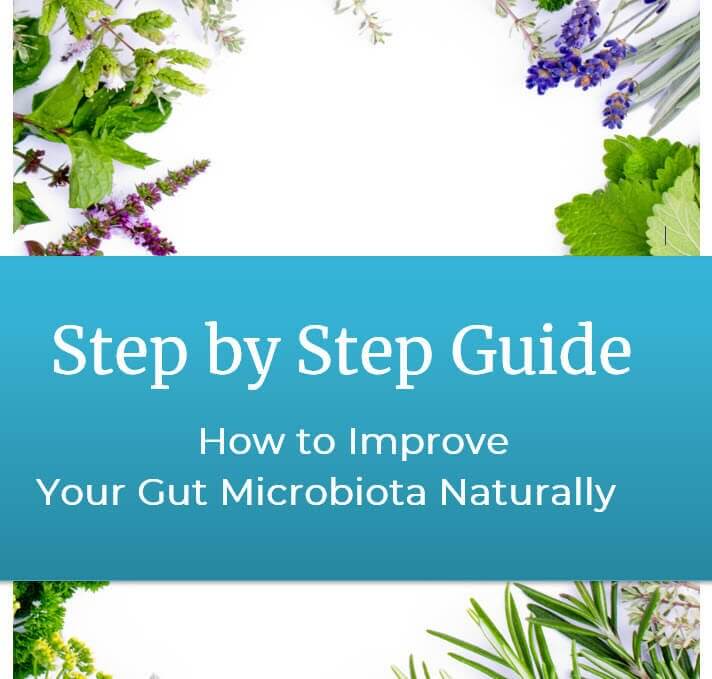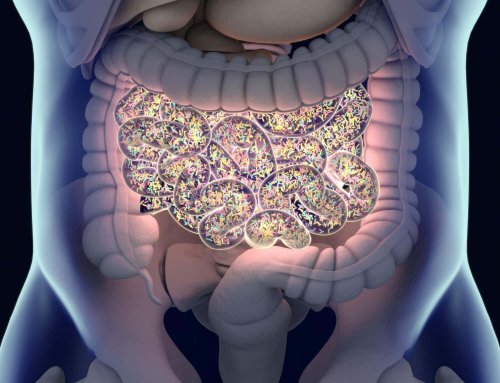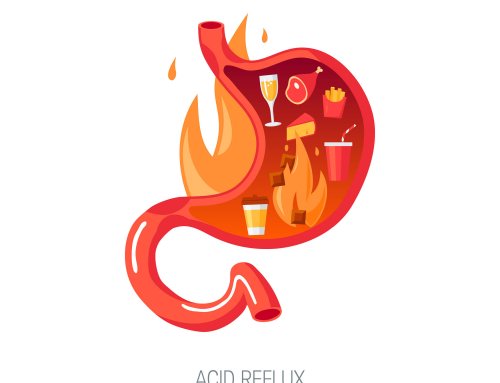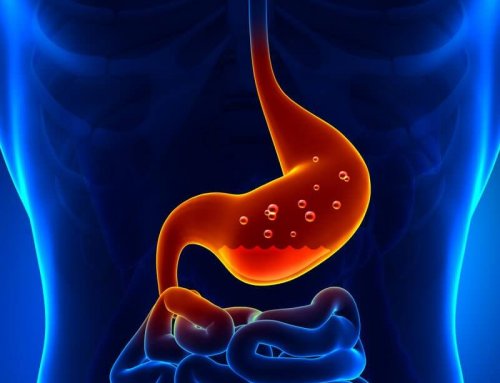Download a copy of the step-by-step guide here!
In our modern Western lifestyle, it’s all but impossible to avoid:
- Food poisoning
- Antibiotics and other drugs
- Chemicals
- Preservatives
Many people are also impacted by:
- Caesarean births
- Formula feeding
- Poor diet choices
- Over- or under-eating
- Other illnesses that negatively affect the health of our gut microbiota
Given the challenging environment we live in, it’s more important than ever to take good care of our gut microbes, especially after they have been impacted. It’s a simple fact that a more diverse gut microbe population will be more resistant and resilient to environmental impacts.
As a group, humans have between one and two thousand different species of bacteria in our gut, the diversity of which has been compared to a rainforest. But you might be surprised to learn that as individuals, we only have around 250 different species in our gut.
This makes it even more important that we care for these little creatures as we have a very important arrangement with them that our health and their health depend on. After all, these bacteria and archaea (as well as fungi, phages and protozoa to a lesser extent) in our gut collectively:
- Protect us against pathogenic intruders such as C. diff., Salmonella, Campylobacter, Staphylococcus, and many others
- Support the development and regulation of our immune system
- Help regulate appetite, fat storage and bile pool levels
- Most importantly, help process up to ½ of the vegetative matter we consume: When gut bacteria ferment carbohydrates, they produce fats and vitamins that nourish us hence providing our ancient survival advantage
Now, the question is… how to protect and nurture this symbiotic relationship between our body and gut microbes?
What to do to improve your gut microbiota
Are you familiar with the Hadza? They live in Tanzania and represent one of the few remaining hunter-gatherer groups in Africa. Their dwindling numbers are divided into small groups getting most of their food from their immediate and seasonally changing environment.
A recent collaborative effort to study the Hadza microbiome (Smits, Leach, Sonnenburg, et.al.) published in Science, shows that:
- The Hadza’s microbiome is much more diverse than us living in the west, particularly those of us living in urban environments
- The Hadza’s microbiome undergoes “seasonal cycling” indicating an adaptation of their gut microbe population to dietary and other changes between the rainy and dry seasons.
Why am I mentioning Hadza? Because if we were the Hadza and had their microbiota, we would likely tolerate more fermentable material (high fiber and other complex carbs) in our diet. But we are not the Hadza and our microbiota has changed as our diet and environment have changed.
We consume more processed foods, cooked foods, etc., and have been subjected to many stressors mentioned on page 3. Trying to make us more like the Hadza at this point would be quite a challenge. Also, keep in mind that the Hadza suffer from a high infant mortality rate and an average life span of 39 once reaching 20 years of age.
For people like myself who are susceptible to IBS, GERD, and many other SIBO/LIBO-related conditions, we don’t tolerate too many and/or too much fermentable carbohydrates including most forms of fiber and other fermentable carbs. But here is good news!
These are the action steps you can take to minimize the risk by protecting and re-populating your healthy gut microbes while improving your digestion and controlling SIBO-related symptoms:
-
Consume whole foods (I provide vegetarian and vegan alternatives in my consultation program)
- Green, leafy and lower carb veggies
- Fatty fish
- Head to tail animals
- Low lactose dairy in moderation
- Low FP fruits in moderation
- Nuts in moderation
- Lots of healthy fats (animal, fish, seafood sourced, butter, cream, and cold-pressed olive, coconut, and other nut oils)
These are examples of foods you can eat without overburdening your gut microbes with too many fermentable carbohydrates.
-
Eat slowly and chew well
Make sure to chew each bite 25-30 times which will not only break food into small pieces that are easier to digest but will also give the amylase enzyme in your saliva more time to break down starches.
Depending on where each of us evolved on the planet, some of us have many gene copies for the salivary amylase enzyme while others (likely myself included) have fewer gene copies and much less amylase in our saliva, making us more intolerant to starch.
Eating slowly and chewing well gives the amylase we do have more time to work on digesting starches.
-
Fast intermittently
Fasting helps to prevent excessive fermentation and bacterial overgrowth/dysbiosis (i.e. less diversity with more unhealthy strains).
This study shows that fasting reduces IBS symptoms, while another pilot study (obese, non-IBS subjects) links fasting with greater diversity and increases in anti-inflammatory and gut lining integrity strains Faecalibacterium prausnitzii and Akkermansia mucinophila.
-
Supplement with digestive enzymes
I recommend trying a digestive enzyme that mirrors the enzymes naturally produced by the pancreas which contains lipase, protease, and most importantly amylase.
Now Foods Pancreatin is a good example (I am not affiliated with the product or company). If you consume higher lactose-containing dairy, you might also try the lactase enzyme.
If the enzymes help, great. If they don’t (after several weeks) chances are that pancreatic enzyme deficiency is not your issue, and you can stop taking the supplements.
-
Select ripe fruits and veggies
Ripe fruits and veggies have fewer complex carbs and more simple sugars that are easier to digest.
-
Consume a variety of fresh vegetables and herbs – also eat some raw
While cooked vegetables are easier to digest, it’s important to consume at least some raw vegetables and herbs. This is because the skins of veggies as well as the stems and leaves of plants contain a wide variety of microorganisms that will help repopulate your gut microbes.
It’s important to challenge and support your gut microbes with different macro and micronutrients from a variety of different plants that support the diverse needs of your microbiota.
Some organisms may be present at low levels in our gut until they receive a boost from specific nutrients which they excel at breaking down!
Do limit the serving size of plant-based foods because consuming too many/much fermentable carbs will have an adverse effect on people with functional GI issues.
These are some of the veggies and fruits I grow in my own organic garden that form a significant part of our summer/fall diet. I am also including the FP (Fermentation Potential) points per serving. FP is a measure (in grams) of fermentable material per serving.
| Veggies & Fruit | Serving Size | FP |
| Cilantro | ¼ cup | 0 |
| Dill | ¼ cup | 0 |
| Basil | ¼ cup | 0 |
| Parsley | ¼ cup | 1 |
| Mint | ¼ cup | 1 |
| Lettuce | 1 cup | 1 |
| Spinach | 1 cup | 1 |
| Kale | 1 cup | 1 |
| Pepper | 1 small | 2 |
| Zucchini | 1 cup | 2 |
| Picking cukes | 1 cup | 2 (Less after pickling) |
| Tomatoes | 1 small | 3 |
| Strawberries | ½ cup | 4 |
| Raspberries | ¼ cup | 6 |
Sulfoquinovose:
One more benefit we get from green leafy plants is access to a little-known but important nutrient called sulfoquinovose.
Green leafy plants such as spinach, kale, broccoli, and cabbage produce 10 billion tons of sulfoquinovose (SQ) per year. SQ is the only sugar identified to date which contains sulfur.
The amazing thing about SQ is that it specifically feeds key healthy gut bacteria (including an important strain of E Coli) that helps maintain the gut lining and prevent colonization by bad bacteria.
Only bacteria possessing a key enzyme called YihQ are able to use SQ. In other words, unhealthy bacteria attempting to take up residence in our gut have one more disadvantage to contend with.
With the enzyme YihQ to unlock SQ, the same metabolic pathways that break down glucose can complete the process of fully metabolizing SQ. If we lost our bacteria with this key enzyme, we could not access the energy or sulfur from plant-based SQ and would be less able to fend off the pathogenic strains.
This discovery also describes an important mechanism for getting sulfur from plants into our bodies. Sulfur is critical for many processes including making the key amino acids methionine and cysteine used to synthesize proteins.
-
Go outside
The outside environment (biosphere) is home to a huge variety of microorganisms, many of which will find their way into our digestive tract.
Most will pass through harmlessly, but some will find a home in our gut and increase our microbiota diversity. It’s no wonder the Hadza have a much more diverse microbiome than us in the West.
Yes, their diet is different, but also they are in closer contact with their natural environment as described in this excellent Jeff Leach lecture (sound issue addressed @ 1:40).
-
Work the soil/Start composting
Soil is essential for life, and composting is the best way to return nutrients (food scraps, yard clippings) to the soil.
We use soil to grow our food and feed our livestock, yet it’s being lost at an alarming rate (cities and erosion). By gardening and composting we can help slow its demise and improve our health all at the same time.
Soil is composed of minerals, water, organic material (decaying plants), and insects. It also contains lots of microbes including:
- Bacteria
- Fungi
- Protozoa
You might be surprised that each gram of compost contains up to 1 billion bacteria and 1 million fungal cells.
Even though composting* and digestion** are unique processes, 16 S rRNA gene sequencing shows that many of the phylogenic groupings of microbes in our gut are also represented in compost including:
- Bacteroidetes
- Firmicutes
- Actinobacteria
- Proteobacteria
- Verrucomicrobia
Since compost is used to enrich the soil for growing, it should be no surprise that the bacteria and fungi in compost end up on the plants we consume. Thus, compost represents a great reservoir of microbes that can support the continued repopulation of our gut.
No wonder people who live on farms are so healthy!
* mostly aerobic (depending on how much you mix it) with pockets of anaerobic environments
** mostly anaerobic with a bit of oxygen in the S.I. and close to the mucosal membrane
-
Grow fresh herbs and veggies in pots indoors
If composting and starting an outside garden is too ambitious, or your climate does not support it, get potted fresh herbs and other plants.
You can also grow plants, sprouts, and herbs from seed indoors.
-
When visiting public places, make a habit of not touching your mouth or mucus membranes with your hands and wash your hands when you get home.
While contact with healthy people can improve our microbiota, not all people have the healthiest microbiome. Also, some people may be sick.
-
Hotel room sanitization
Carry some alcohol-containing sanitary wipes when staying at hotels or cruise ships. And give all the touch points (faucets, flush handle and seat, doorknobs, light switches, etc.) a wipe down before settling in.
-
Take steps to avoid food poisoning
Avoid restaurants where there are any questions about how sanitary they are. If these questions arise, it would be best to leave than to be sorry later.
Eat well cooked food and drink bottled beverages if you are traveling to developing countries.
What not to do (* whenever you can) if you want to improve your gut microbiota
-
*Avoid antibiotics and other chemicals (insecticides, herbicides, preservatives, etc.) as much as possible
Have discussions with your doctor and inquire if the antibiotic is necessary or not. Some people still take antibiotics for viral infections. Antibiotics won’t help a cold or flu.
Shop organic whole foods at farmers’ markets and/or grocery stores. Also, start your own organic garden (if you can) – it’s therapeutic and rewarding.
-
*Avoid hospitals, nursing homes, and doctor’s offices when possible
Of course, we will all need to visit these places for various reasons. But they are frequently hotbeds of bacteria and viruses, including C. difficile.
C. diff is an ever more common infection, particularly for people with:
- Weakened immune systems
- Taking antibiotics
- Taking proton pump inhibitors
Make sure to wash your hands with soap and water after leaving these facilities. Hand sanitizers can help with a variety of pathogens though it’s not a complete solution for C. diff. as this bacterium produces alcohol-resistant spores.
-
Don’t consume too many / much fermentable carbohydrates
Limit the following foods as much as possible:
- Pasta
- Legumes
- Bread
- Sugary drinks
- Commercially made desserts
- Other hard-to-digest starches
The Fast Tract Diet provides alternative foods with less fermentable carbs including some more easily digestible pasta, bread, rice, potatoes, and desserts. But when in doubt on the details, it’s best to limit foods from these groups.
The key is to increase fats in your diet when you cut carbs. Here are three excellent articles on ways to add more fat (One, Two, Three).
If you are concerned about increasing fats in your diet, these articles (One, Two) can help you update your knowledge about fats.
The more you can limit fermentable carbohydrates, the sooner your symptoms will subside and the sooner you can gradually expand your diet.
“Once your symptoms are under control, you can experiment with adding some of the fermentable carbs back into your diet, but not before.” This is what I tell my clients.
Keep in mind that you are still feeding your microbiota. They are not starving. You are simply putting them on a diet.
Start Small & Create Healthy Habits
It might be overwhelming to start putting all these suggestions into action. Start small and create a habit of practicing one or two at a time. Improving our health vis a vis our gut microbes’ is a lifelong process.
Healing and improving digestion takes time. Sometimes it’s months or even years. But over time with improved dietary and behavioral practices as well as identifying and addressing underlying causes unique to each person, you should expect more tolerance and the ability to enjoy foods that used to give you a problem.
For more information about how to address acid reflux, GERD, LPR (silent reflux), and SIBO naturally, refer to the Fast Tract Digestion Heartburn book. For IBS and SIBO, refer to the Fast Tract Digestion IBS book.
Just remember that “Rome was not built in a day”. Neither was our gut microbiome.
For inspiration, read the personal experience of Jaeme, Judy, Amy, Michele, or Jane. They are the admins of the Fast Tract Diet Facebook group.







Leave A Comment
You must be logged in to post a comment.